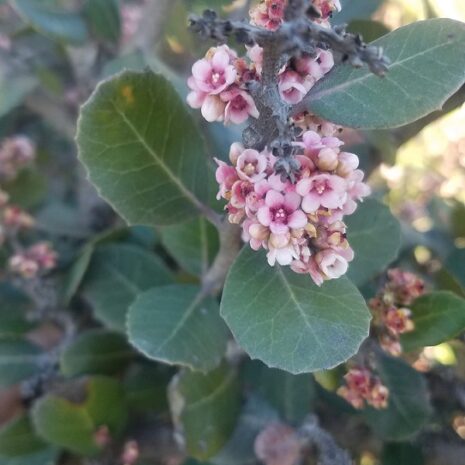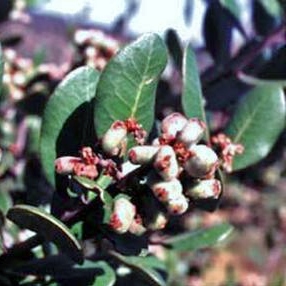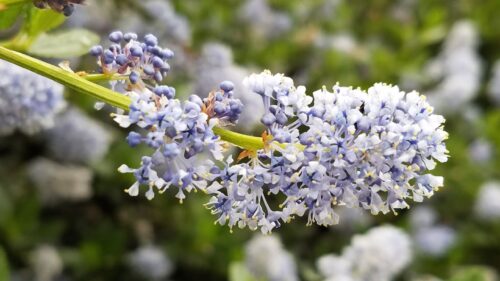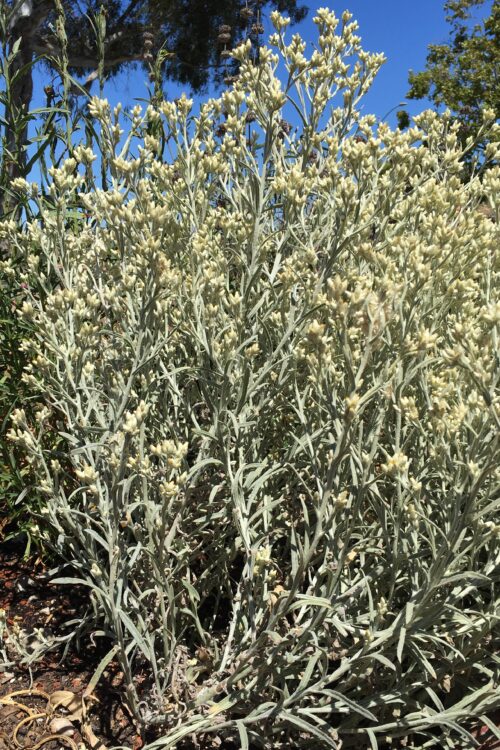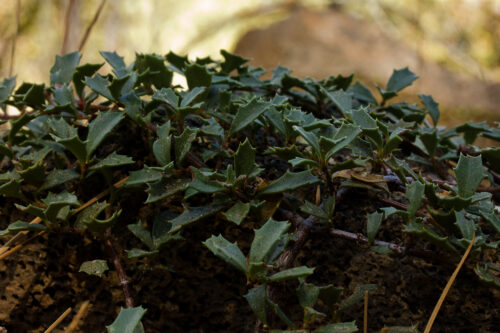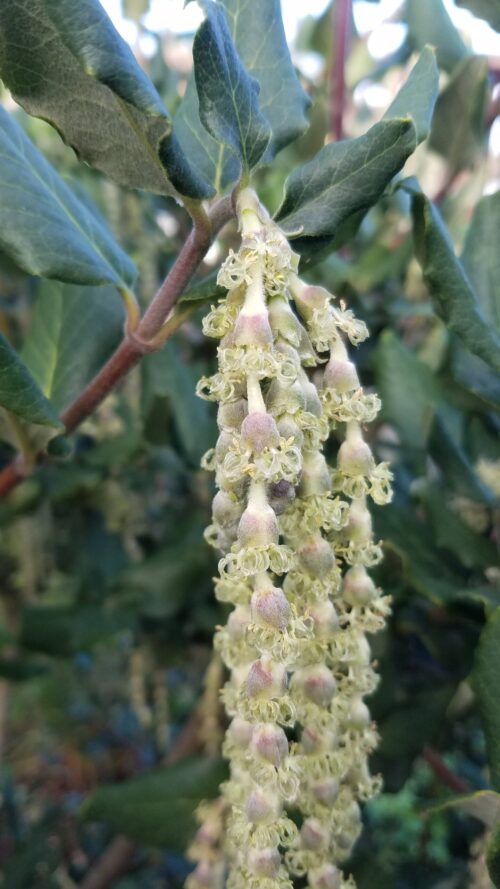Rhus integrifolia
$4.95 – $27.50
We do not take online orders for plants. Please come in to the nursery, call or email: (510) 234-2222 or sales@thewatershednursery.com
Share this page
Lemonade-berry
This large evergreen shrub has dark, glossy green leaves which tend to be leathery and rounded at the tips. Growth rate is moderate to 4′-5′ tall, spreading to 15′ or more across.
Native to California slopes above the coast. Pink flowers put on quite a show in February and March (January to July if particularly happy) before giving way to red, hairy, sticky berries. Performs fairly well as a hedge; grows quite well in the shade of Oaks; tolerates clay, but does better in loam, sandy, or rocky soils. Tolerates clipping and is virtually pest-free.
The berries are edible and can also be used for lemonade. Lemonade berry is also good for erosion control.
Sun: Full Sun, Part Shade
Water: Dry, Light, Moderate
Soil: Clay, Loam, Sand, Rocky
Other: Attracts Butterflies, Attracts Birds, Attracts Bees, Drought Tolerant, Erosion Control, Deer Resistant
| Container | 2-Gal, 5-Gal-O, D-40-O, D-40O, 5-Gal, D-40, D-40S, TB4 |
|---|---|
| Ecological Value | The fruit is consumed by roadrunners and many upland gamebirds, songbirds, large and small mammals. Also provides a special value to native bees. |
| Historical Uses | The Cahuilla and other California native people ate the fruits of the lemonade berry raw. They soaked the berries in water to make a beverage, and ground the dried berries into flour for a mush or to |
| Distribution | From Santa Barbara County and the Channel Islands to San Diego, extending into Baja California & its offshore islands |
| Elevation | Between 0 and 2953 feet |
| Communities | |
| Habitat | Ocean bluffs, canyons and dry places below |

